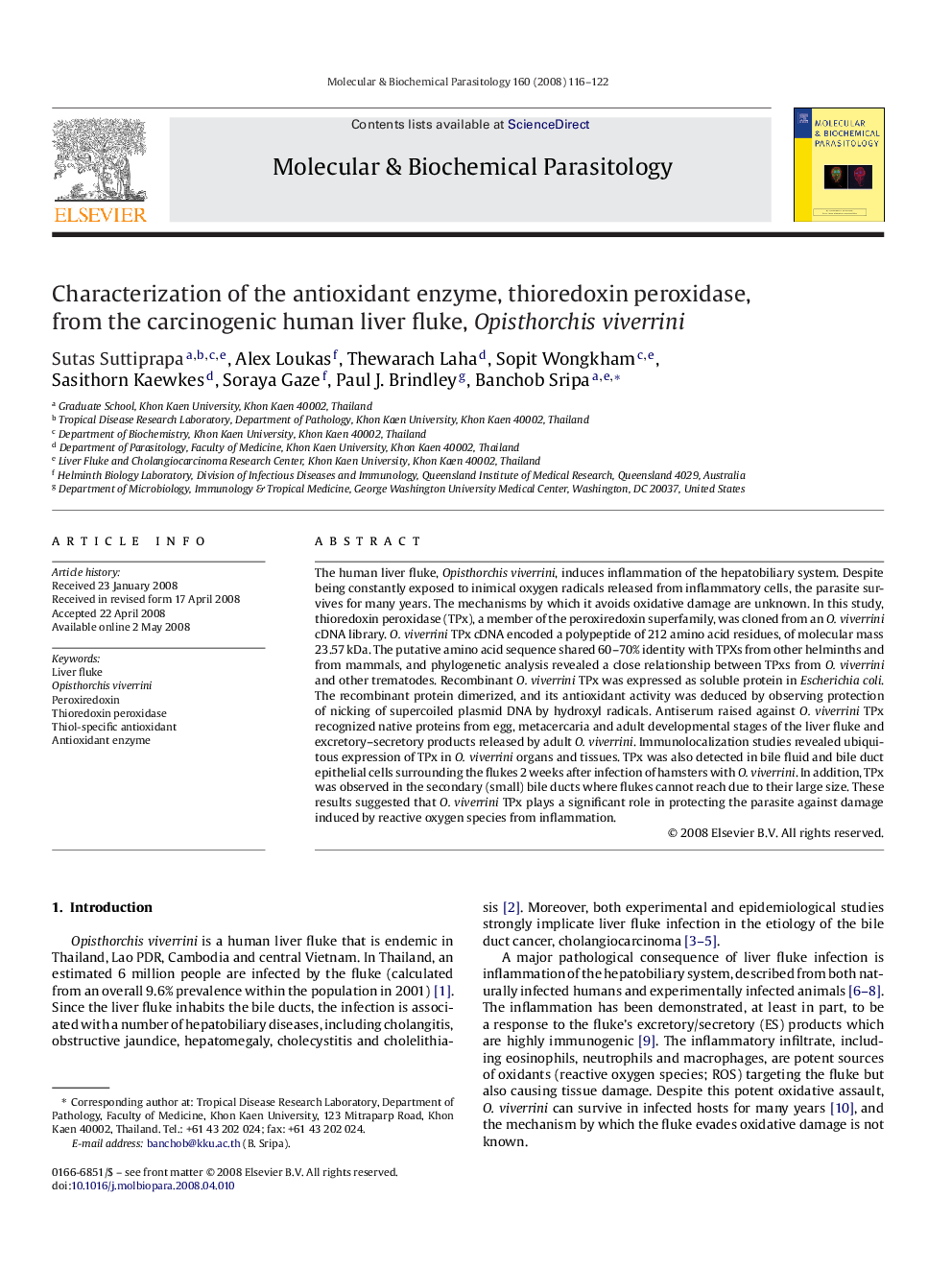| Article ID | Journal | Published Year | Pages | File Type |
|---|---|---|---|---|
| 5916002 | Molecular and Biochemical Parasitology | 2008 | 7 Pages |
Abstract
The human liver fluke, Opisthorchis viverrini, induces inflammation of the hepatobiliary system. Despite being constantly exposed to inimical oxygen radicals released from inflammatory cells, the parasite survives for many years. The mechanisms by which it avoids oxidative damage are unknown. In this study, thioredoxin peroxidase (TPx), a member of the peroxiredoxin superfamily, was cloned from an O. viverrini cDNA library. O. viverrini TPx cDNA encoded a polypeptide of 212 amino acid residues, of molecular mass 23.57Â kDa. The putative amino acid sequence shared 60-70% identity with TPXs from other helminths and from mammals, and phylogenetic analysis revealed a close relationship between TPxs from O. viverrini and other trematodes. Recombinant O. viverrini TPx was expressed as soluble protein in Escherichia coli. The recombinant protein dimerized, and its antioxidant activity was deduced by observing protection of nicking of supercoiled plasmid DNA by hydroxyl radicals. Antiserum raised against O. viverrini TPx recognized native proteins from egg, metacercaria and adult developmental stages of the liver fluke and excretory-secretory products released by adult O. viverrini. Immunolocalization studies revealed ubiquitous expression of TPx in O. viverrini organs and tissues. TPx was also detected in bile fluid and bile duct epithelial cells surrounding the flukes 2 weeks after infection of hamsters with O. viverrini. In addition, TPx was observed in the secondary (small) bile ducts where flukes cannot reach due to their large size. These results suggested that O. viverrini TPx plays a significant role in protecting the parasite against damage induced by reactive oxygen species from inflammation.
Keywords
Related Topics
Life Sciences
Biochemistry, Genetics and Molecular Biology
Molecular Biology
Authors
Sutas Suttiprapa, Alex Loukas, Thewarach Laha, Sopit Wongkham, Sasithorn Kaewkes, Soraya Gaze, Paul J. Brindley, Banchob Sripa,
